Effect of Recycled Foundry Sand on the Workability and Mechanical Properties of Mortar
Abstract
1. Introduction
2. Materials and Methods
2.1. Materials
2.2. Mix Proportions
2.3. Methods
2.3.1. Workability
2.3.2. Physical Properties
2.3.3. Mechanical Properties
2.3.4. Wear Resistance
2.3.5. Variable Correlation
2.3.6. Microstructural Characterisation
3. Results and Discussion
3.1. Workability
3.2. Physical Characterisation of Mortars
3.3. Mechanical Characterisation of Mortars
3.4. Mechanical Durability
3.5. Variable Correlation
3.6. Microstructural Characterisation
4. Conclusions and Future Work
- Increasing the UFS replacement reduces the workability of the mixes, making it impractical to manufacture mortars with high UFS replacement and low W/C ratios.
- Increasing the UFS replacement decreases the compactness of the mortars, so it is necessary to increase the W/C ratio, reducing the specific gravity, dry density and bulk density and increasing the porosity and absorption.
- Low quantities of UFS replacement can lead to a slight improvement in mechanical properties, while high UFS replacement requires high W/C ratios and, consequently, it is not possible to achieve high values of mechanical properties.
- For the same workability, increasing the UFS replacement increases the wear value obtained. Even with a UFS replacement of 100%, the values obtained remain below the most restrictive value, which is 20 mm.
- From microstructural characterisation, it can be concluded that in mortars with low UFS replacement, the paste and the aggregate are uniformly distributed without the presence of pores and with good adhesion between the paste and the aggregate. When the UFS replacement increases, pores begin to appear in the mortar.
- From a practical point of view, the authors recommend using up to 25% replacement of UFS because, with a minimum amount of extra water, a workability equal to that of a conventional mortar is obtained; it has slightly higher mechanical strengths, and the mechanical durability is very similar to that of a control mortar.
- Future studies should be carried out in the field of mortars with UFS to increase the replacement percentage without increasing the W/C ratio, maintaining the same workability.
Author Contributions
Funding
Institutional Review Board Statement
Informed Consent Statement
Data Availability Statement
Acknowledgments
Conflicts of Interest
References
- Garcia Del Angel, G.; Thomas, C. The use of foundry sand for recycled aggregate concrete. In The Structural Integrity of Recycled Aggregate Concrete Produced with Fillers and Pozzolans; Elsevier: Amsterdam, The Netherlands, 2022; pp. 3–24. [Google Scholar] [CrossRef]
- Foundry Industry Recycling Starts Today (FIRST); United States Environmental Protection Agency. Foundry Sand Facts for Civil Engineers; Federal Highway Administration: Washington, DC, USA, 2004. [Google Scholar]
- Monosi, S.; Sani, D.; Tittarelli, F. Used Foundry Sand in Cement Mortars and Concrete Production. Open Waste Manag. J. 2010, 3, 18–25. [Google Scholar] [CrossRef]
- Jesus, C.; Arruda Junior, E.; Braga, N.S.; Silva Junior, J.; Barata, M.S. Coloured Concrete Produced from Low-Carbon Cements: Mechanical Properties, Chromatic Stability and Sustainability. J. Build. Eng. 2023, 67, 106018. [Google Scholar] [CrossRef]
- Cui, K.; Chang, J. Hydration, reinforcing mechanism, and macro performance of multi-layer graphene-modified cement composites. J. Build. Eng. 2022, 57, 104880. [Google Scholar] [CrossRef]
- Aksoylu, C.; Özkılıç, Y.O.; Hadzima-Nyarko, M.; Işık, E.; Arslan, M.H. Investigation on Improvement in Shear Performance of Reinforced-Concrete Beams Produced with Recycled Steel Wires from Waste Tires. Sustainability 2022, 14, 13360. [Google Scholar] [CrossRef]
- Zeybek, Ö.; Özkılıç, Y.O.; Çelik, A.İ.; Deifalla, A.F.; Ahmad, M.; Sabri Sabri, M.M. Performance evaluation of fiber-reinforced concrete produced with steel fibers extracted from waste tire. Front. Mater. 2022, 9, 1057128. [Google Scholar] [CrossRef]
- Basaran, B.; Kalkan, I.; Aksoylu, C.; Özkılıç, Y.O.; Sabri, M.M.S. Effects of Waste Powder, Fine and Coarse Marble Aggregates on Concrete Compressive Strength. Sustainability 2022, 14, 14388. [Google Scholar] [CrossRef]
- Karalar, M.; Özkılıç, Y.O.; Aksoylu, C.; Sabri Sabri, M.M.; Beskopylny, A.N.; Stel’makh, S.A.; Shcherban’, E.M. Flexural behavior of reinforced concrete beams using waste marble powder towards application of sustainable concrete. Front. Mater. 2022, 9, 701. [Google Scholar] [CrossRef]
- Çelik, A.İ.; Özkılıç, Y.O.; Zeybek, Ö.; Özdöner, N.; Tayeh, B.A. Performance Assessment of Fiber-Reinforced Concrete Produced with Waste Lathe Fibers. Sustainability 2022, 14, 11817. [Google Scholar] [CrossRef]
- Karalar, M.; Özkılıç, Y.O.; Deifalla, A.F.; Aksoylu, C.; Arslan, M.H.; Ahmad, M.; Sabri, M.M.S. Improvement in Bending Performance of Reinforced Concrete Beams Produced with Waste Lathe Scraps. Sustainability 2022, 14, 12660. [Google Scholar] [CrossRef]
- Çelik, A.İ.; Özkılıç, Y.O.; Zeybek, Ö.; Karalar, M.; Qaidi, S.; Ahmad, J.; Burduhos-Nergis, D.D.; Bejinariu, C. Mechanical Behavior of Crushed Waste Glass as Replacement of Aggregates. Materials 2022, 15, 8093. [Google Scholar] [CrossRef]
- Qaidi, S.; Najm, H.M.; Abed, S.M.; Özkılıç, Y.O.; Al Dughaishi, H.; Alosta, M.; Sabri, M.M.S.; Alkhatib, F.; Milad, A. Concrete Containing Waste Glass as an Environmentally Friendly Aggregate: A Review on Fresh and Mechanical Characteristics. Materials 2022, 15, 6222. [Google Scholar] [CrossRef]
- Karalar, M.; Bilir, T.; Çavuşlu, M.; Özkiliç, Y.O.; Sabri, M.M. Use of recycled coal bottom ash in reinforced concrete beams as replacement for aggregate. Front. Mater. 2022, 9, 1064604. [Google Scholar] [CrossRef]
- Qaidi, S.; Al-Kamaki, Y.; Hakeem, I.; Dulaimi, A.F.; Özkılıç, Y.; Sabri, M.; Sergeev, V. Investigation of the physical-mechanical properties and durability of high-strength concrete with recycled PET as a partial replacement for fine aggregates. Front. Mater. 2023, 10, 3085. [Google Scholar] [CrossRef]
- Tittarelli, F. 4-Waste foundry sand. In Waste and Supplementary Cementitious Materials in Concrete; Woodhead Publishing Series in Civil and Structural Engineering; Siddique, R., Cachim, P., Eds.; Woodhead Publishing: Sawston, UK, 2018; pp. 121–147. ISBN 978-0-08-102156-9. [Google Scholar]
- Mavroulidou, M.; Lawrence, D. Can waste foundry sand fully replace structural concrete sand? J. Mater. Cycles Waste Manag. 2019, 21, 594–605. [Google Scholar] [CrossRef]
- Bhardwaj, B.; Kumar, P. Waste foundry sand in concrete: A review. Constr. Build. Mater. 2017, 156, 661–674. [Google Scholar] [CrossRef]
- Siddique, R.; Noumowe, A. Utilization of spent foundry sand in controlled low-strength materials and concrete. Resour. Conserv. Recycl. 2008, 53, 27–35. [Google Scholar] [CrossRef]
- Del Angel, G.G.; Aghajanian, A.; Tamayo, P.; Rico, J.; Thomas, C. Siderurgical Aggregate Cement-Treated Bases and Concrete Using Foundry Sand. Appl. Sci. 2021, 11, 435. [Google Scholar] [CrossRef]
- Etxeberria, M.; Vázquez, E.E.; Mari, A.; Barra, M. Influence of amount of recycled coarse aggregates and production process on properties of recycled aggregate concrete. Cem. Concr. Res. 2007, 37, 735–742. [Google Scholar] [CrossRef]
- Monosi, S.; Tittarelli, F.; Giosuè, C.; Ruello, M.L. Effect of two different sources and washing treatment on the properties of UFS by-products for mortar and concrete production. Constr. Build. Mater. 2013, 44, 260–266. [Google Scholar] [CrossRef]
- Siddique, R.; Sandhu, R.K. Properties of Self-Compacting Concrete Incorporating Waste Foundry Sand. Leonardo J. Sci. 2013, 23, 105–124. [Google Scholar]
- Sandhu, R.K.; Siddique, R. Strength properties and microstructural analysis of self-compacting concrete incorporating waste foundry sand. Constr. Build. Mater. 2019, 225, 371–383. [Google Scholar] [CrossRef]
- Cunha, S.; Tavares, A.; Aguiar, J.B.; Castro, F. Cement mortars with ceramic molds shells and paraffin waxes wastes: Physical and mechanical behavior. Constr. Build. Mater. 2022, 342, 127949. [Google Scholar] [CrossRef]
- Ramon Roque da Silva, L.; Cirino Gaspar, F.; Cesar Gonçalves, P.; Claret dos Santos, V.; de Lourdes Noronha Motta Melo, M.; Ferreira Gomes, G. An experimental dynamic study of cement mortar with polyurethane residues and foundry sand. Eng. Struct. 2023, 274, 115107. [Google Scholar] [CrossRef]
- de Paiva, F.F.G.; dos Santos, L.F.; Tamashiro, J.R.; Pereira Silva, L.H.; Teixeira, S.R.; Galvín, A.P.; López-Uceda, A.; Kinoshita, A. Effect of phenolic resin content in waste foundry sand on mechanical properties of cement mortars and leaching of phenols behaviour. Sustain. Chem. Pharm. 2023, 31, 100955. [Google Scholar] [CrossRef]
- Sabour, M.R.; Derhamjani, G.; Akbari, M. Mechanical, durability properties, and environmental assessment of geopolymer mortars containing waste foundry sand. Environ. Sci. Pollut. Res. 2022, 29, 24322–24333. [Google Scholar] [CrossRef]
- Vázquez-Rodriguez, F.J.; Valadez-Ramos, J.; Puente-Ornelas, R.; Contreras, J.E.; Arato, A.; Rodríguez, E.A. Nonferrous waste foundry sand and milling fly ash as alternative low mechanical strength materials for construction industry: Effect on mortars at early ages. Rev. Rom. Mater. Rom. J. Mater. 2018, 48, 338–345. [Google Scholar]
- Çevik, S.; Mutuk, T.; Oktay, B.M.; Demirbaş, A.K. Mechanical and microstructural characterization of cement mortars prepared by waste foundry sand (WFS). J. Aust. Ceram. Soc. 2017, 53, 829–837. [Google Scholar] [CrossRef]
- Matos, P.R.D.; Marcon, M.F.; Schankoski, R.A.; Prudêncio, L.R., Jr. Novel applications of waste foundry sand in conventional and dry-mix concretes. J. Environ. Manag. 2019, 244, 294–303. [Google Scholar] [CrossRef]
- Cui, K.; Liang, K.; Chang, J.; Lau, D. Investigation of the macro performance, mechanism, and durability of multiscale steel fiber reinforced low-carbon ecological UHPC. Constr. Build. Mater. 2022, 327, 126921. [Google Scholar] [CrossRef]
- EN 197-1; Cement Part 1: Composition, Specifications and Conformity Criteria for Common Cements. European Committee For Standardisation: London, UK, 2011.
- UNE 80103:2013; Test Methods of Cements. Physical Analysis. Actual Density Determination. UNE: Madrid, Spain, 2013.
- EN 196-6; Methods of Testing Cement-Part 6: Determination of Fineness. European Committee For Standardisation: London, UK, 2010.
- Paul, P.; Belhaj, E.; Diliberto, C.; Apedo, K.L.; Feugeas, F. Comprehensive characterization of spent chemical foundry sand for use in concrete. Sustainability 2021, 13, 12881. [Google Scholar] [CrossRef]
- Parashar, A.; Aggarwal, P.; Saini, B.; Aggarwal, Y.; Bishnoi, S. Study on performance enhancement of self-compacting concrete incorporating waste foundry sand. Constr. Build. Mater. 2020, 251, 118875. [Google Scholar] [CrossRef]
- EN 1015-3; Methods of Test for Mortar for Masonry. Part 3: Determination of Consistence of Fresh Mortar (by Flow Table). Turkish Standard Institute: Ankara, Turkey, 2000.
- EN 12390-7; Testing Hardened Concrete-Part 7: Density of Hardened Concrete. European Committee For Standardisation: London, UK, 2020.
- EN 83980; Concrete Durability. Test Methods. Determination of the Water Absorption, Density and Accessible Porosity for Water in Concrete. European Committee For Standardisation: London, UK, 2014.
- EN 1015-11; Methods of Test for Mortar for Masonry-part 11: Determination of Flexural and Compressive Strength of Hardened Mortar. European Committee For Standardisation: London, UK, 2020.
- EN 1338; Concrete Paving Blocks-Requirements and Test Methods. European Committee For Standardisation: London, UK, 2004.
- Pandas Pearson Correlation. Available online: https://pandas.pydata.org/docs/reference/api/pandas.DataFrame.corr.html (accessed on 9 February 2023).
- Srivastava, A.; Singh, S.K. Utilization of alternative sand for preparation of sustainable mortar: A review. J. Clean. Prod. 2020, 253, 119706. [Google Scholar] [CrossRef]
- de Barros Martins, M.; Barros, R.M.; Silva, G.; Santos, I.F.S.D. Study on waste foundry exhaust sand, WFES, as a partial substitute of fine aggregates in conventional concrete. Sustain. Cities Soc. 2019, 45, 187–196. [Google Scholar] [CrossRef]
- Siddique, R.; Schutter, G.D.; Noumowe, A. Effect of used-foundry sand on the mechanical properties of concrete. Constr. Build. Mater. 2009, 23, 976–980. [Google Scholar] [CrossRef]
- Khanduri, A. Properties of Mortar Incorporating Waste Foundry Sand; Thapar University: Patiala, India, 2010. [Google Scholar]
- Mushtaq, S.M.; Siddique, R.; Goyal, S.; Kaur, K. Experimental studies and drying shrinkage prediction model for concrete containing waste foundry sand. Clean. Eng. Technol. 2021, 2, 100071. [Google Scholar] [CrossRef]
- Thomas, C.; Setién, J.; Polanco, J.A.A.J.; Alaejos, P.; De Juan, M.S. Durability of recycled aggregate concrete. Constr. Build. Mater. 2013, 40, 1054–1065. [Google Scholar] [CrossRef]
- Sainz-Aja, J.; Carrascal, I.; Polanco, J.; Thomas, C.; Sosa, I.; Casado, J.; Diego, S. Self-compacting recycled aggregate concrete using out-of-service railway superstructure wastes. J. Clean. Prod. 2019, 230, 945–955. [Google Scholar] [CrossRef]
- Laplante, P.; Aïtcin, P.C.; Vézina, D. Abrasion resistance of concrete. J. Mater. Civ. Eng. 1991, 3, 19–28. [Google Scholar] [CrossRef]
- Warudkar, A.; Elavenil, S.; Arunkumar, A. Assessment of abrasion resistance of concrete pavement for durability. Int. J. Civ. Eng. Technol. 2018, 9, 1176–1181. [Google Scholar]

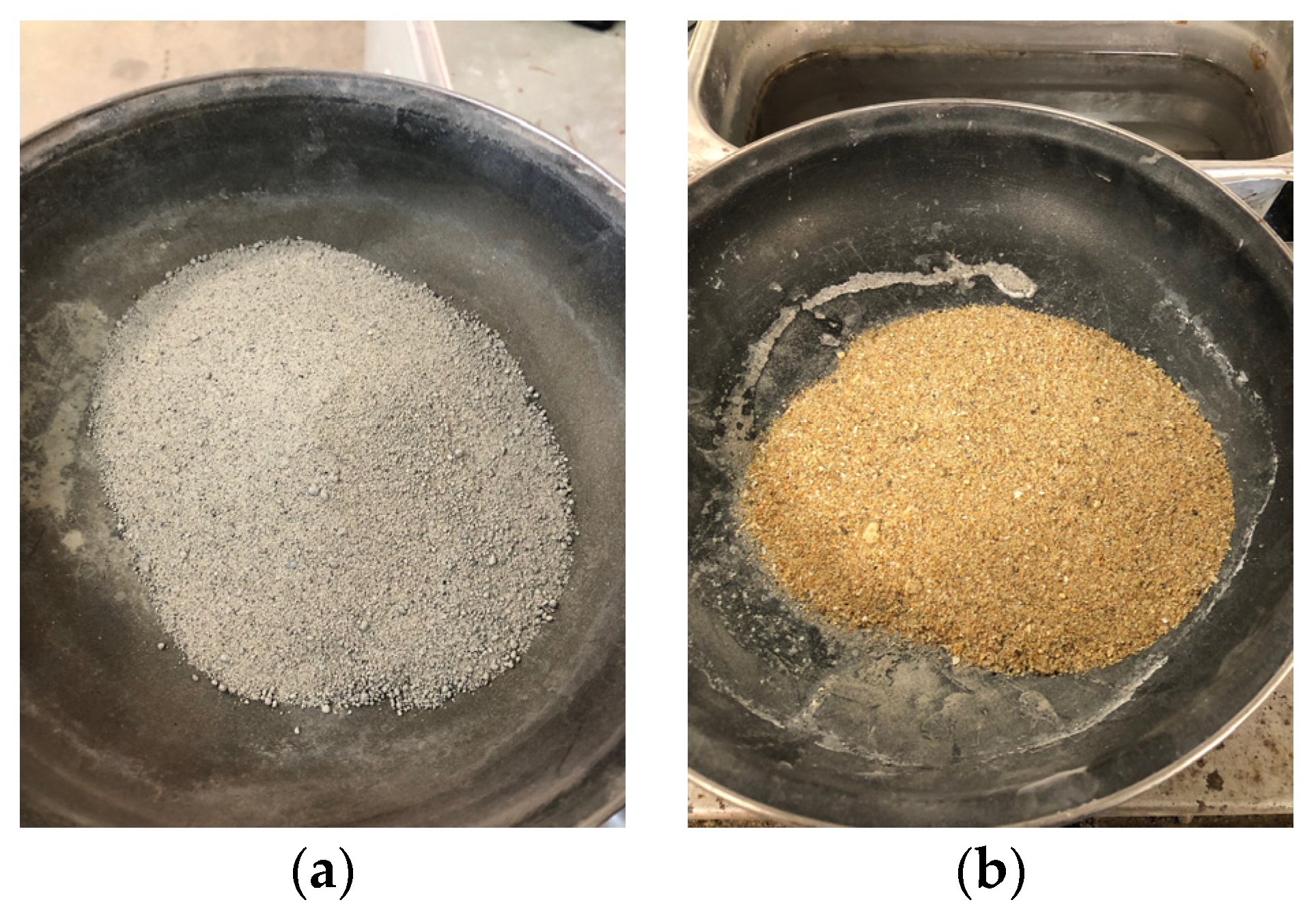
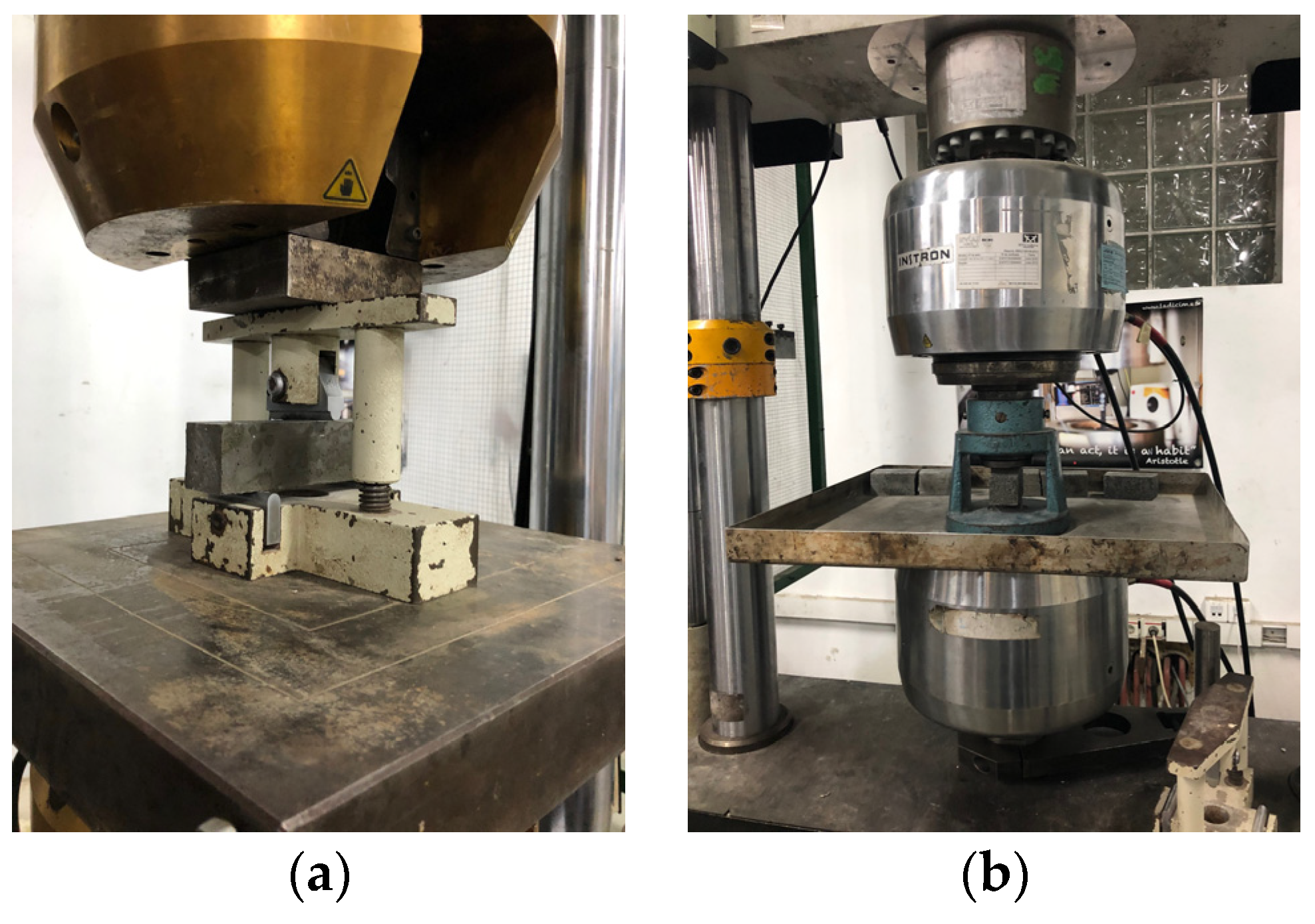
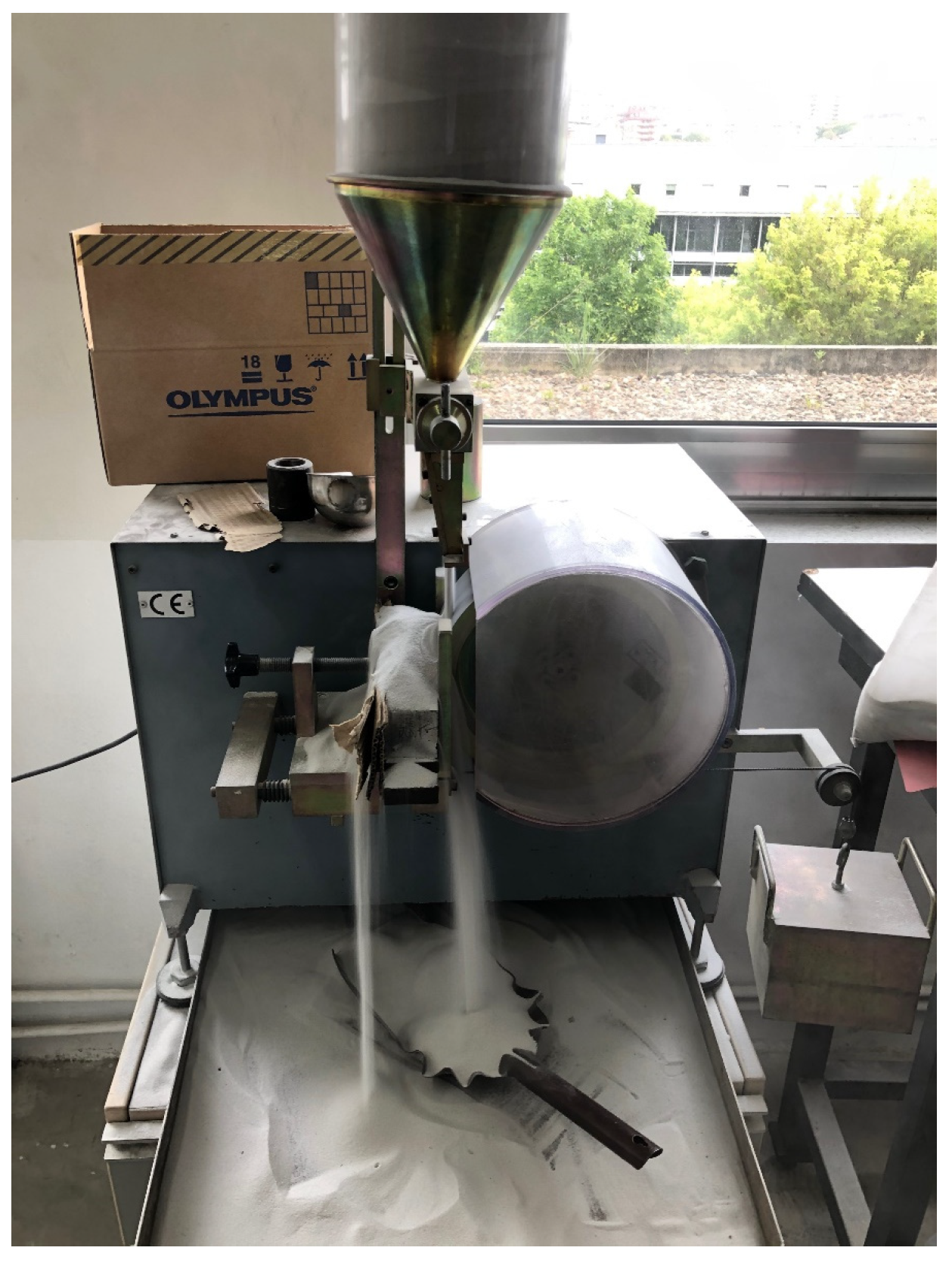





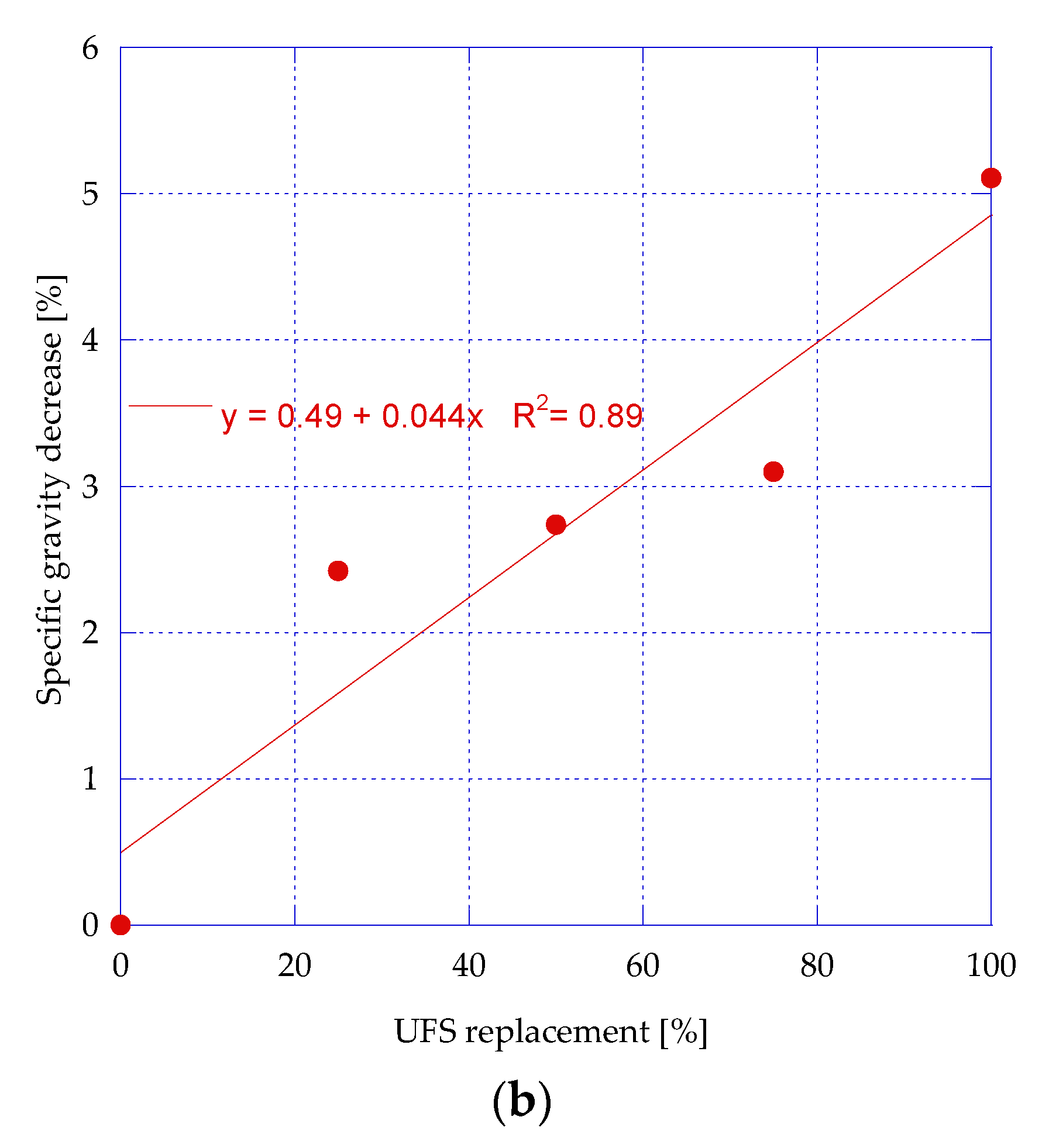

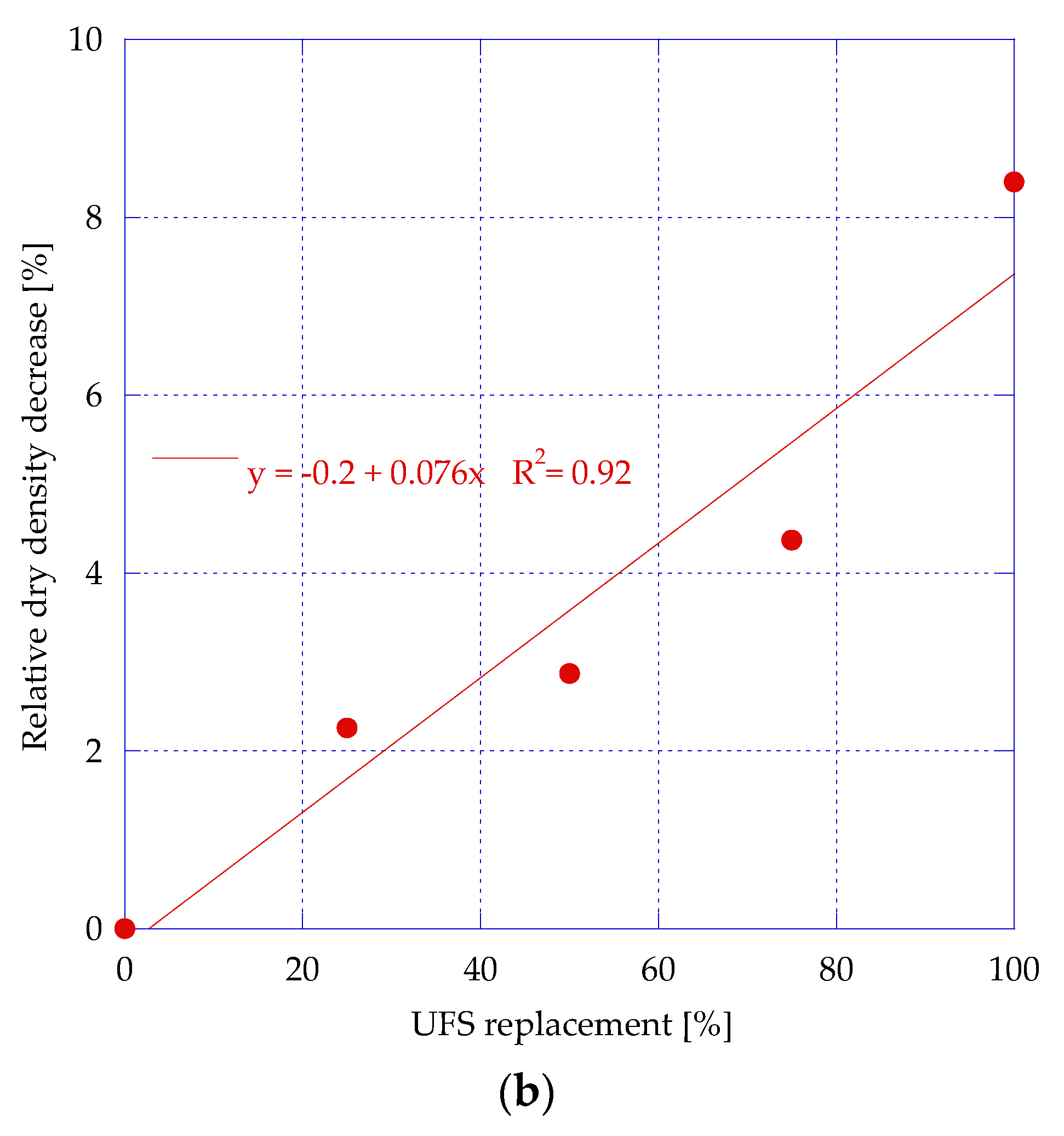


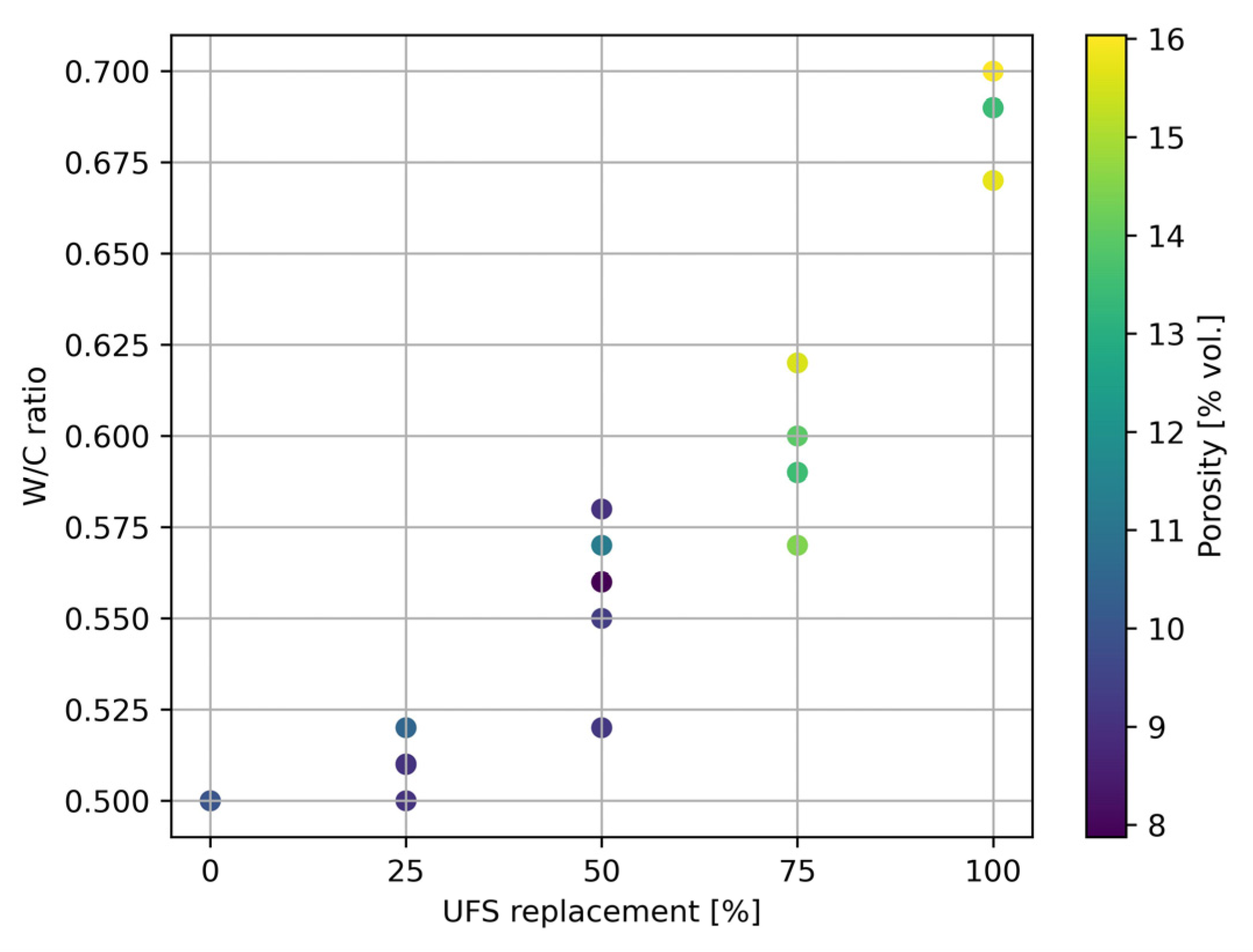
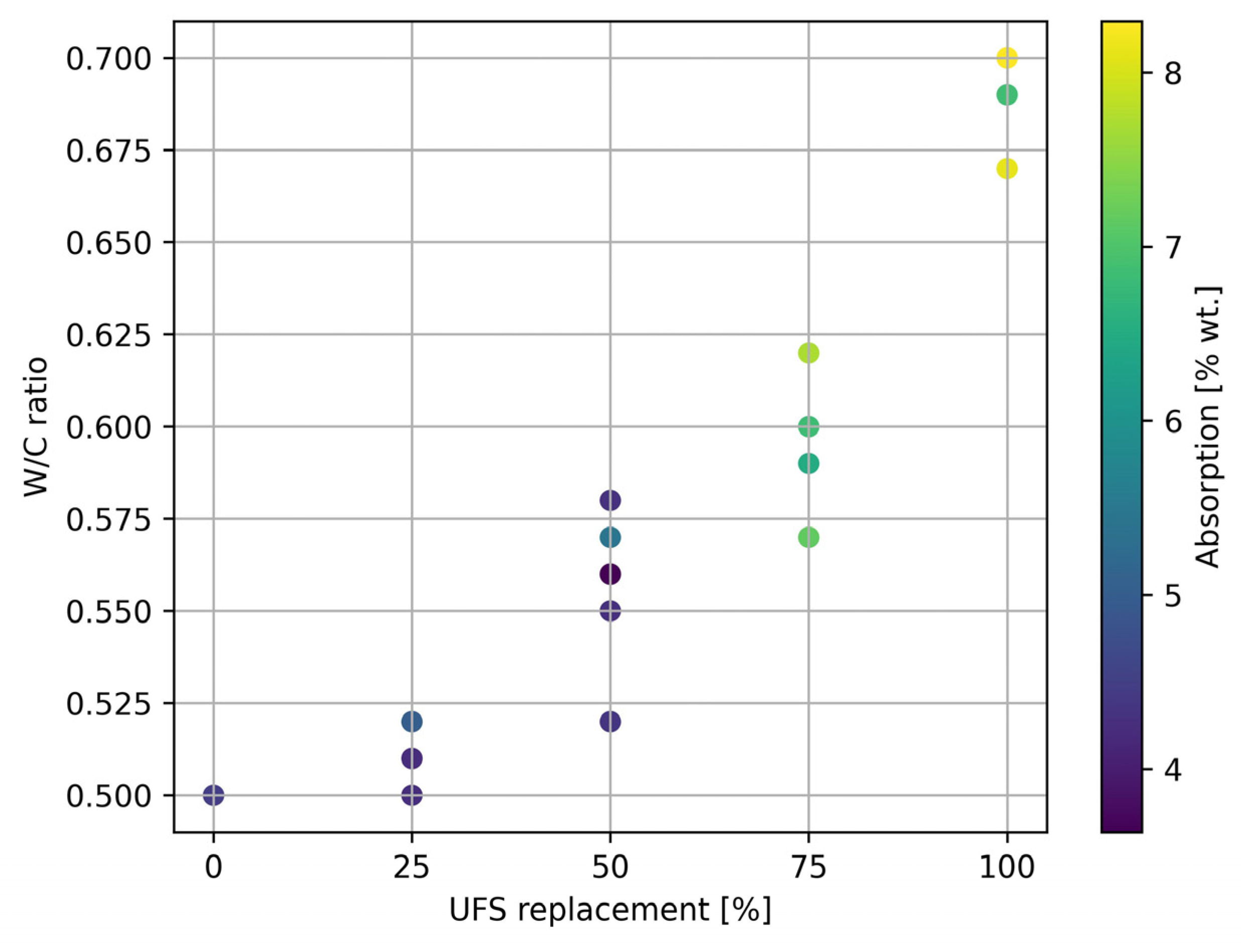
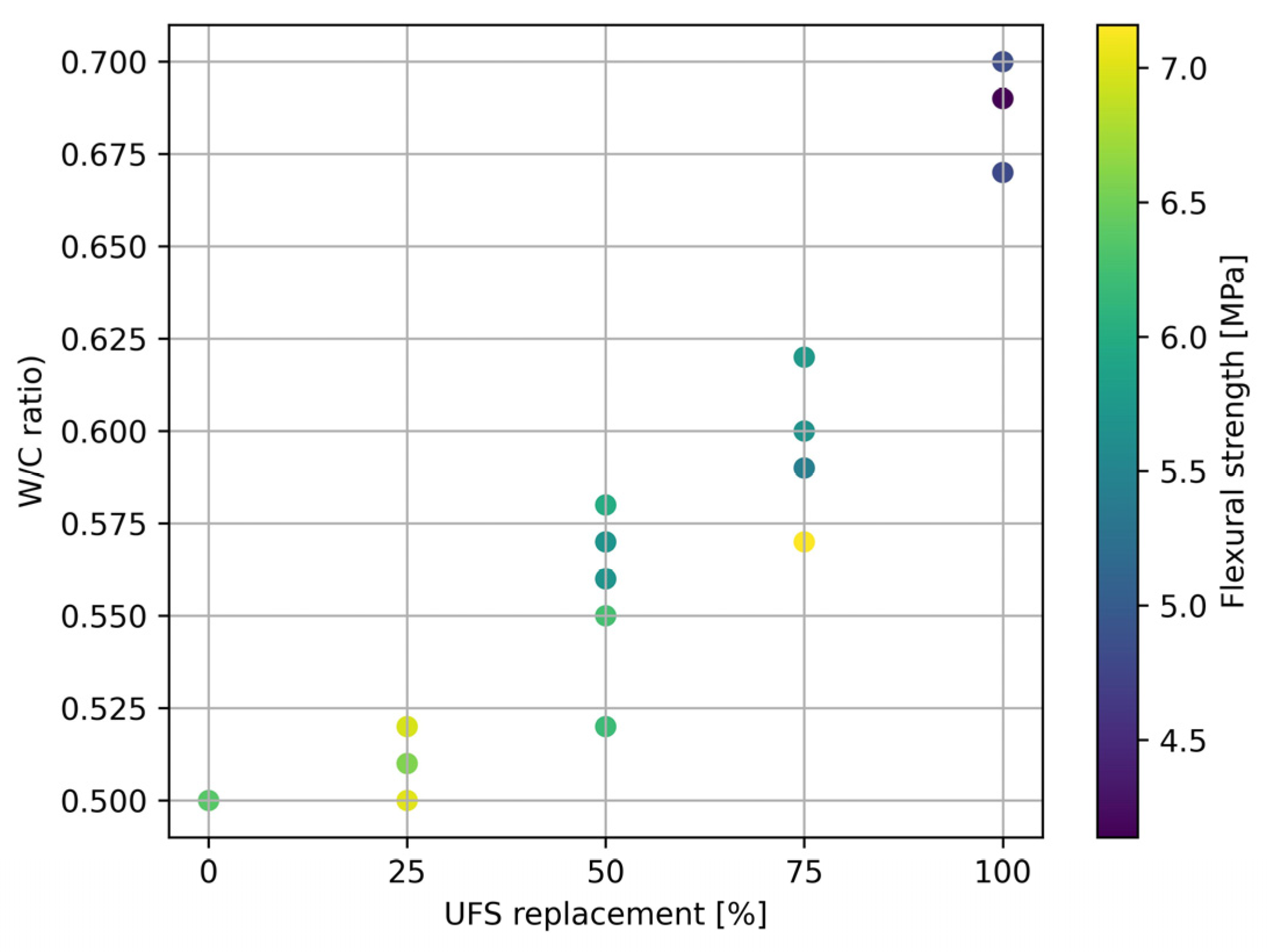

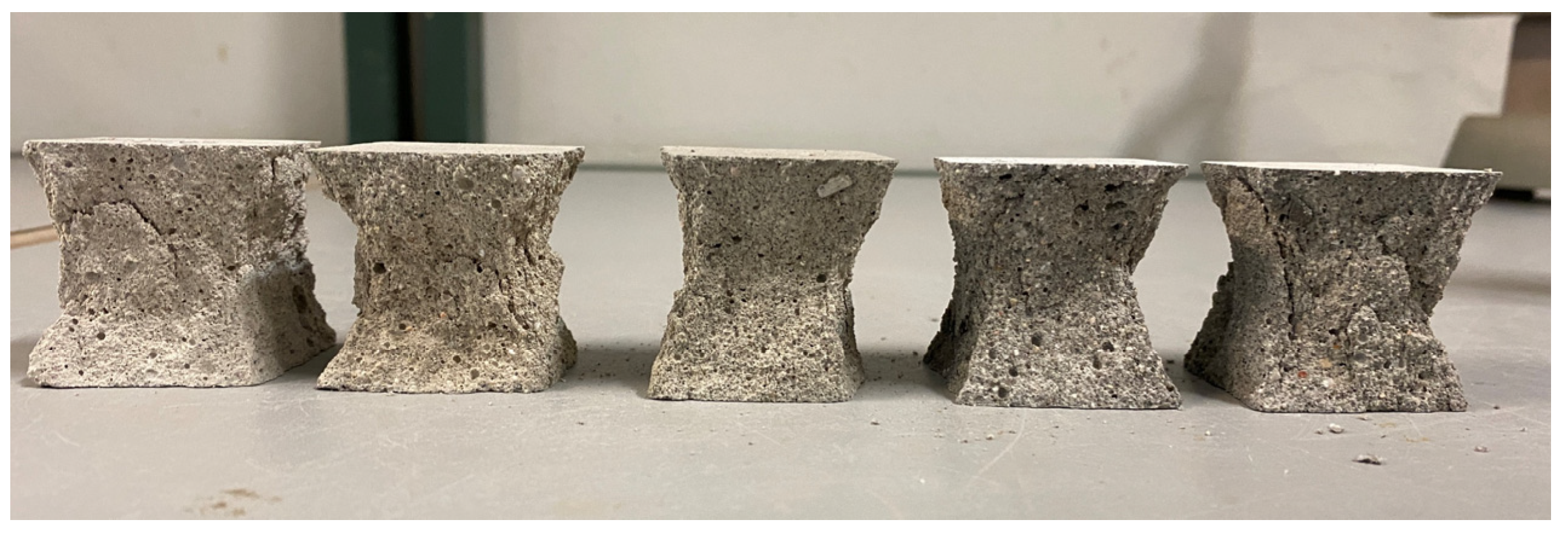
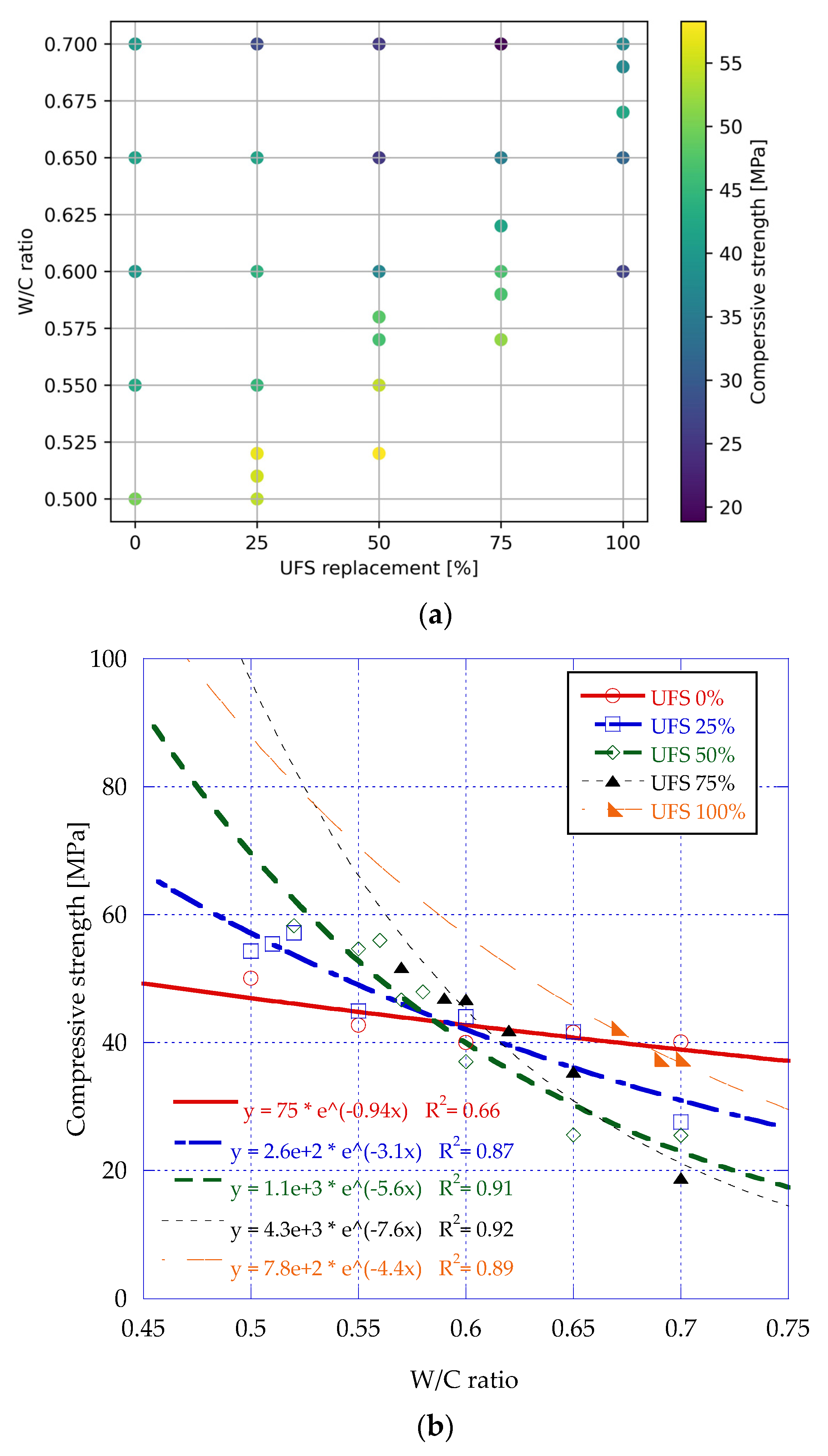
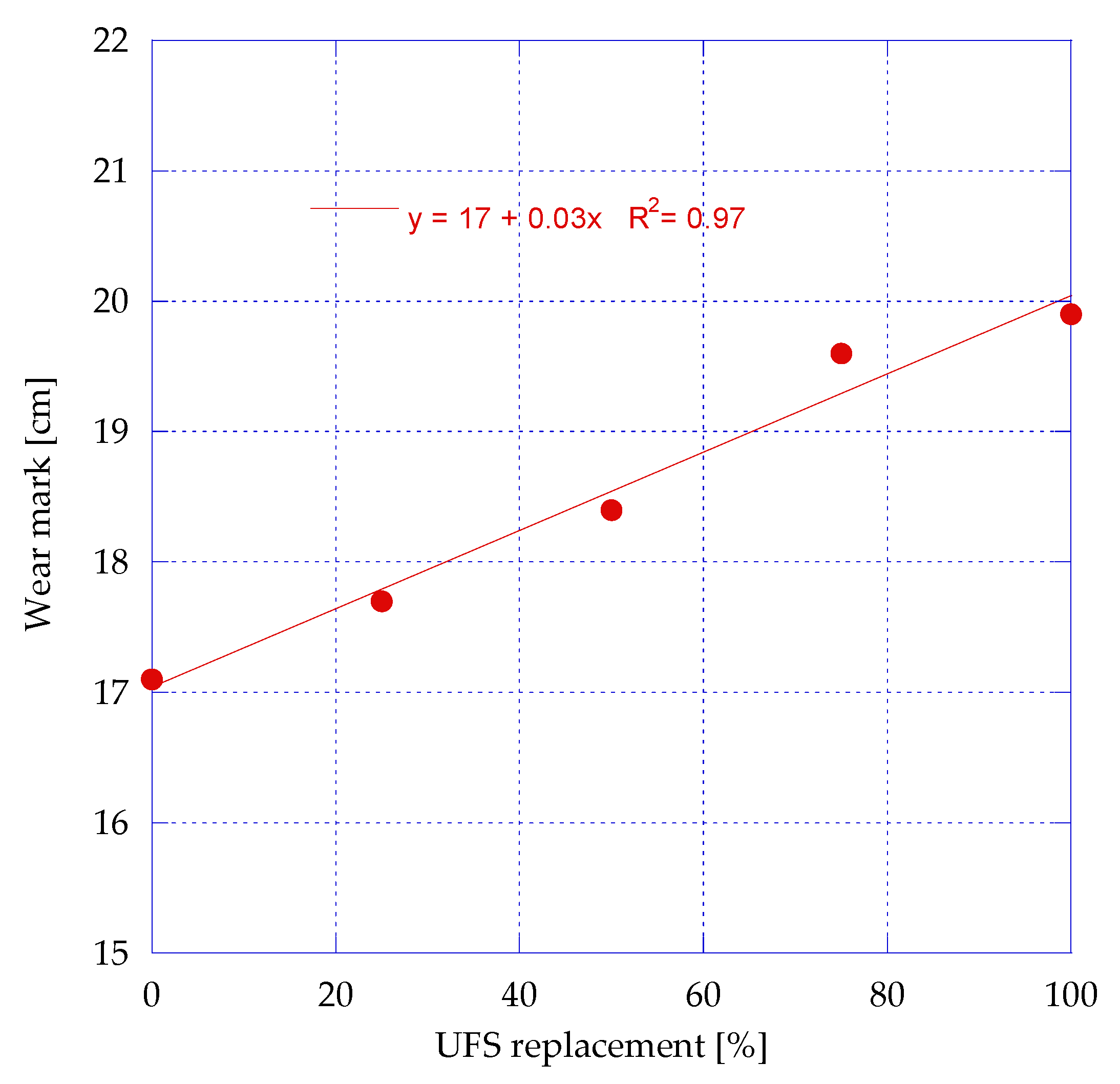
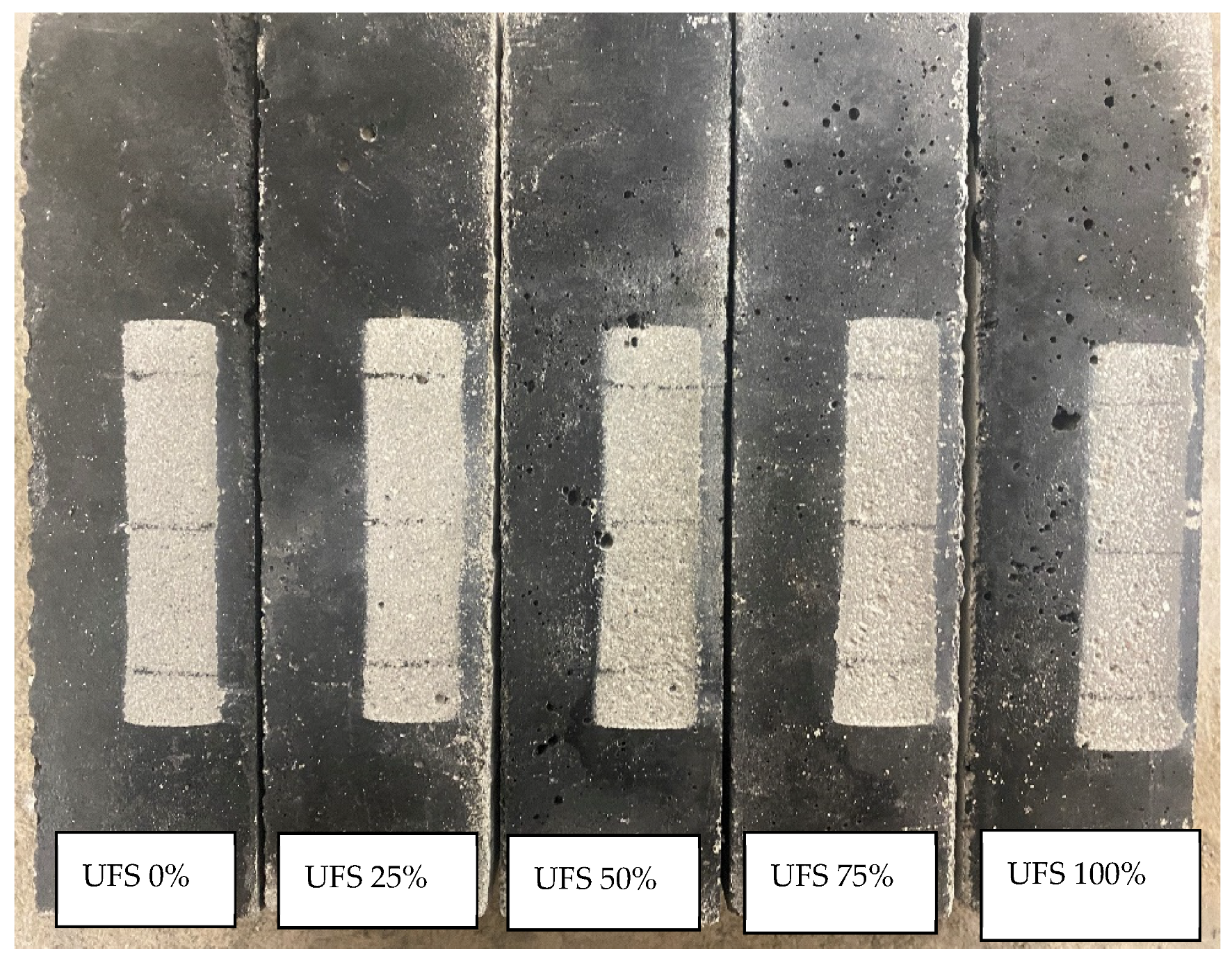
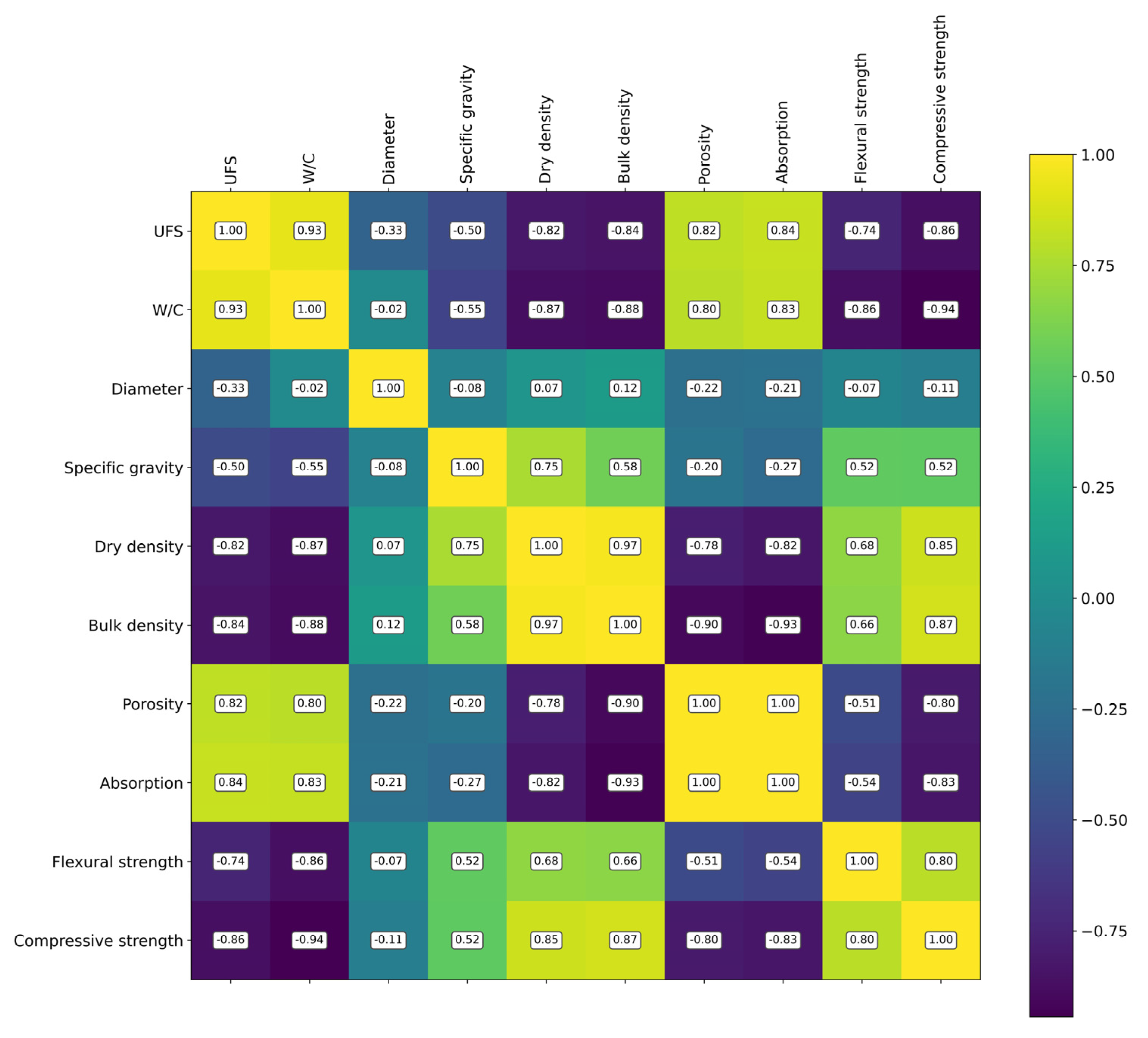
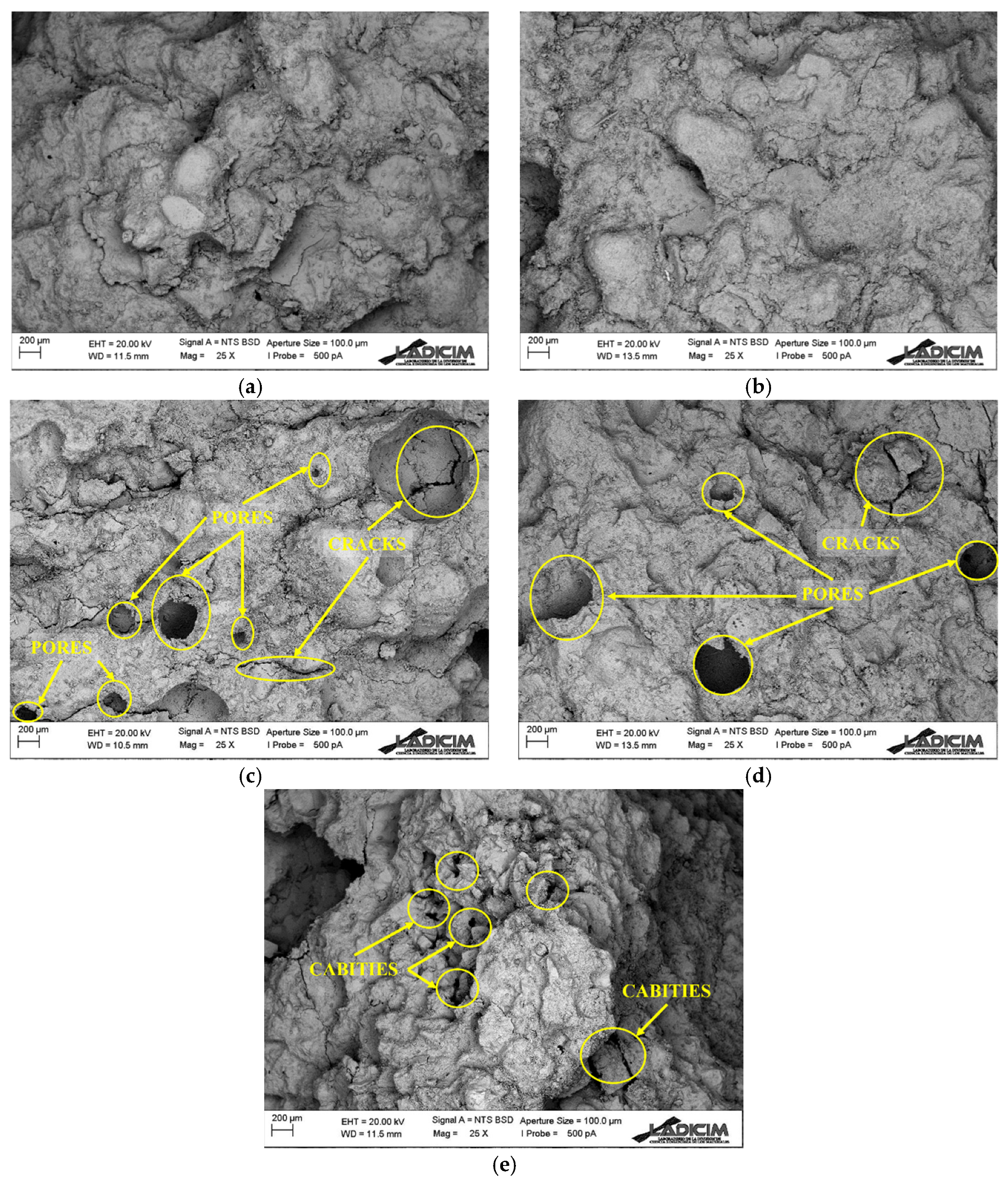
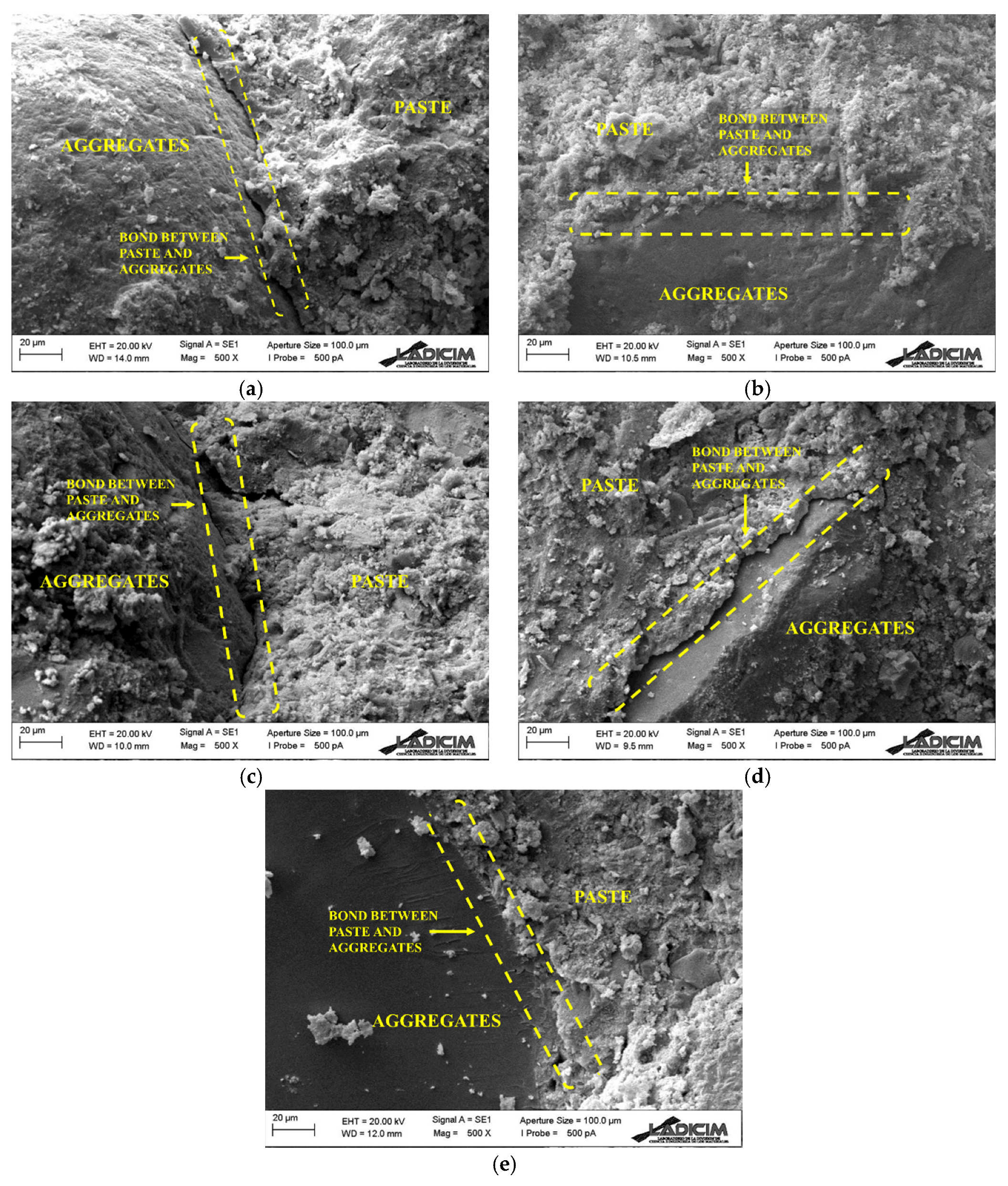
| Composition (wt.%) | |||||||||
|---|---|---|---|---|---|---|---|---|---|
| CaO | SiO2 | Al2O3 | Fe2O3 | SO3 | K2O | MgO | TiO2 | C | |
| CEM I | 69.6 | 18.65 | 3.15 | 2.66 | 3.22 | 0.54 | 1.17 | 0.17 | 0.47 |
| Component | Density [g/cm3] | Absorption [%] |
|---|---|---|
| SS | 2.58 | 0.35 |
| UFS | 2.58 | 3.37 |
| Composition (wt.%) | |||||||||||
|---|---|---|---|---|---|---|---|---|---|---|---|
| CaO | SiO2 | Al2O3 | Cr2O3 | Fe2O3 | SO3 | K2O | MgO | TiO2 | P2O5 | Others | |
| FS | 7.83 | 83.9 | 2.87 | 1.67 | 1.4 | 0.72 | 0.7 | 0.53 | 0.13 | 0.06 | <0.05 |
| UFS Replacement [%] | 0% | 25% | 50% | 75% | 100% |
|---|---|---|---|---|---|
| W/C | 0.50 (*) (**) | 0.50 (*) | 0.50 | 0.57 (*) | 0.60 |
| 0.55 | 0.51 (*) (**) | 0.52 (*) | 0.59 (*) | 0.65 | |
| 0.60 | 0.52 (*) | 0.55 (*) | 0.60 (*) | 0.67 (*) | |
| 0.65 | 0.55 | 0.56 (*) | 0.62 (*) (**) | 0.69 (*) | |
| 0.70 | 0.60 | 0.57 (*) (**) | 0.65 | 0.70 (*) (**) | |
| 0.65 | 0.58 (*) | 0.70 | |||
| 0.70 | 0.60 | ||||
| 0.65 | |||||
| 0.70 |
Disclaimer/Publisher’s Note: The statements, opinions and data contained in all publications are solely those of the individual author(s) and contributor(s) and not of MDPI and/or the editor(s). MDPI and/or the editor(s) disclaim responsibility for any injury to people or property resulting from any ideas, methods, instructions or products referred to in the content. |
© 2023 by the authors. Licensee MDPI, Basel, Switzerland. This article is an open access article distributed under the terms and conditions of the Creative Commons Attribution (CC BY) license (https://creativecommons.org/licenses/by/4.0/).
Share and Cite
García Del Angel, G.; Sainz-Aja, J.A.; Tamayo, P.; Cimentada, A.; Cabrera, R.; Pestana, L.R.; Thomas, C. Effect of Recycled Foundry Sand on the Workability and Mechanical Properties of Mortar. Appl. Sci. 2023, 13, 3436. https://doi.org/10.3390/app13063436
García Del Angel G, Sainz-Aja JA, Tamayo P, Cimentada A, Cabrera R, Pestana LR, Thomas C. Effect of Recycled Foundry Sand on the Workability and Mechanical Properties of Mortar. Applied Sciences. 2023; 13(6):3436. https://doi.org/10.3390/app13063436
Chicago/Turabian StyleGarcía Del Angel, Gilberto, Jose A. Sainz-Aja, Pablo Tamayo, Ana Cimentada, René Cabrera, Luis Ruiz Pestana, and Carlos Thomas. 2023. "Effect of Recycled Foundry Sand on the Workability and Mechanical Properties of Mortar" Applied Sciences 13, no. 6: 3436. https://doi.org/10.3390/app13063436
APA StyleGarcía Del Angel, G., Sainz-Aja, J. A., Tamayo, P., Cimentada, A., Cabrera, R., Pestana, L. R., & Thomas, C. (2023). Effect of Recycled Foundry Sand on the Workability and Mechanical Properties of Mortar. Applied Sciences, 13(6), 3436. https://doi.org/10.3390/app13063436










